Review for Love & Peace
Introduction
I have a hard time trying to define director Sion Sono. That wasn’t made any easier by the first film of his that I saw, courtesy of Third Window Films, the brilliant and epic Love Exposure. But it is a film that defies easy categorisation, just like the director himself. I thought I had him sussed out with the next three films that I watched, Cold Fish, Himizu, and Land of Hope, films that were gritty, hard-hitting and realistic. There was a side to Love Exposure like this, so I began to think that this was the director’s natural groove. Until I watched Tokyo Tribe, the world’s first rap battle musical. And now Third Window Films brings us his Love & Peace, another musical, but a rock and roll Kaiju musical. Kaiju are those strange beasts like Godzilla that terrorise Japanese cities if you’re wondering. I think I have Sion Sono pegged now. He’s an esoteric Takashi Miike, also succeeding spectacularly at anything he turns his hand to, but a couple of steps further away from the mainstream. Apparently he wrote the screenplay to Love & Peace 25 years ago, but he brings the mature filmmaker’s deft hand to making it.
Ryoichi Suzuki is a failed rock star at 33. He failed a long time previously when no one came to his three gigs, and he just gave up. Now he’s just lint in the belly button of life, belittled and ridiculed by everyone, including his television, and not even automatic doors will open for him. The only light of his life is Yoko Terashima, a girl at work who is alone in treating him with respect. Then one lunchtime his eyes meet that of a turtle (who fortunately for Ryoichi is sitting in the tank of a turtle salesman), and in Pikadon he has his first friend. He tells Pikadon everything, his hopes, his dreams, and his ambitions to still make it as a rock star, to score a gig at the Nippon Stadium, constructed for the forthcoming 2020 Olympics. Only the stress and ridicule from his co-workers makes Ryoichi panic once more, and he ‘disposes’ of Pikadon.
Pikadon winds up in the sewers where he encounters a strange old man and a menagerie of unwanted toys and pets, only this menagerie can talk. The old man makes magic candy for his friends, and he’s soon cooking up a batch to give Pikadon a voice, only Pikadon eats wish candy instead. He decided to make Ryoichi’s dreams come true, and sure enough, in the world above, doors have started opening for Ryoichi. But every wish that gets fulfilled causes Pikadon to grow.
Picture
Love & Peace gets a gorgeous Blu-ray presentation. The image is clear and sharp throughout, with rich and vivid colours. There are no signs of compression or aliasing, black levels are excellent, detail levels are spot on; really this is an impeccable transfer. The colour palette suits the fantastic nature of the story, pushing things towards the hyper-real, very much a nostalgic tinge to the image. It’s a Technicolor fantasy of a movie, which grows more and more magical as it progresses, so that by the time the giant turtle is stalking the streets of Shinjuku, it’s all perfectly believable. The effects in this film have been accomplished the old fashioned way, and I have to admit that it looks spectacular, much more fun than what CGI can manage.
The images in this review are kindly supplied by Third Window Films.
Sound
The DTS-HD MA 5.1 Surround Japanese track is just as impressive, the dialogue is clear throughout, and the music comes across brilliantly. The subtitles are timed accurately and free of typos, but this is one of those Blu-rays which are limited in how many subtitles it can show on screen at any one time. There are moments where there is more than one conversation going on at a time, some background dialogue from a TV, and it can feel as if you’re missing out on something plot specific.
Extras
The disc presents its content with an animated menu.
In the extras, you’ll find the Theatrical Trailer, and The Making of Special Effects (Tokusatsu) featurette running to 23:50 and in 720p. This takes you behind the scenes of the effects work, with interviews with the effects crew. Personally, after being impressed with the sequences in the film, I felt no urge to peek behind the curtain, but it’s here if you want to.
Conclusion
I haven’t the slightest idea of what I just watched, but I do know that I loved it. I realise that is the last thing that you want to hear from a reviewer, but if I try to analyse Love & Peace, try to break it down into its constituent components and fathom just what makes it work, it will sound utterly stupid, and hardly a film that you want to put on your watch list at all. After all, having read that synopsis you might be forgiven for hoping for a quirky, offbeat comedy in the vein of Turtles Are Surprisingly Fast Swimmers at best. That would be great of course, quirky and offbeat are admirable aims, and Love & Peace certainly manages quirky and offbeat in style. But it is so much more on top.
Sure there is the tale of a wannabe rocker and his pet turtle, there’s a romance too, and there is the family friendly fantasy with the old magic man and his menagerie. It’s a musical that turns into a giant monster disaster movie, and on top of that there’s a message too, a look at what Japan has become, what it has collectively forgotten, and the direction in which it is heading. The way Ryoichi gets his first break is a case in point. He names his turtle Pikadon, just randomly putting two syllables together. But Pikadon is also a euphemism for the atomic bomb, which some people have on their minds when they evaluate the forthcoming Olympics in light of Japanese history. Lamenting the loss of his turtle, Ryoichi pens a song swearing that he won’t forget Pikadon. But when he performs it, the people think he’s singing a political song, capturing the mood of the nation. The scouts that also hear him tell him that it’s this element of the song that caught their attention, which will make him a star. And then they change the lyrics erasing all mention of Pikadon. It so perfectly captures the manufactured nature of modern entertainment, put together by committee, and having all soul purged from it.
What impressed me most about Love & Peace was that despite all these aspects to it, despite the multi-faceted story that it manages to tell in its runtime, it’s emotionally engaging and moving as well. The characters draw you in, and you begin to feel for them, almost imperceptibly. You’ll be surprised to get a lump in the throat for a doll named Maria, and you will be wiping a tear from your cheek because of a giant turtle. And on top of all that, Love & Peace is the best Santa Claus story I have ever seen. I don’t know exactly what it is that I love about Love & Peace, with all its disparate and patently absurd parts, it is a film that shouldn’t work, but it works brilliantly, and I do in the end love this film. Don’t try and figure it out. Just immerse yourself in its world for two hours and be deliriously happy.
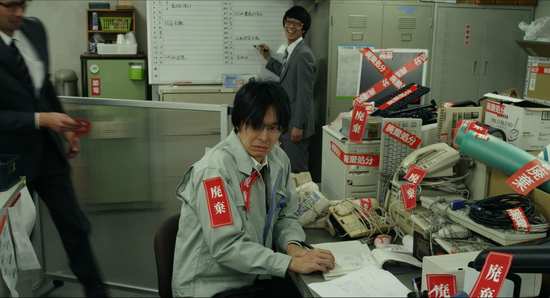

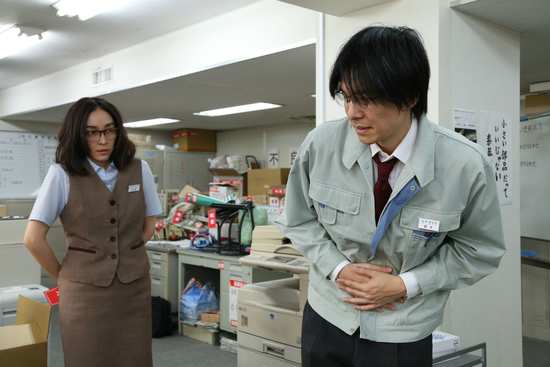
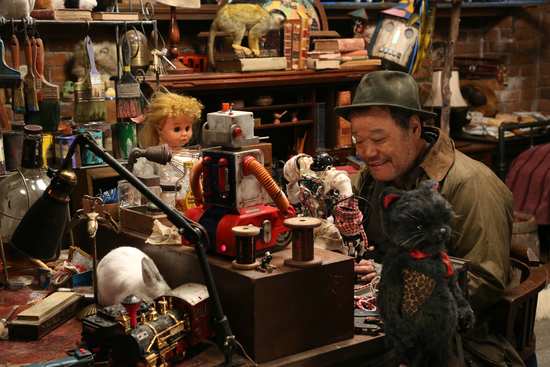
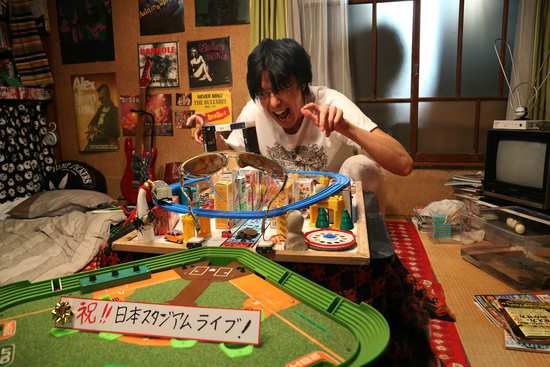
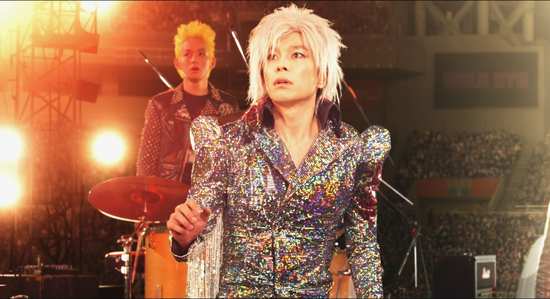

Your Opinions and Comments
Be the first to post a comment!